|
Sharpening colored pencils is actually one of the most challenging things about using them. Once you understand the basic principles of sharpening and have a few skills in your pocket, you're off and running! 1) Know What They're Made of You can lengthen the life and better care for your colored pencils by knowing what they're made of. The Prismacolor Premier Colored Pencils have a soft waxy core that is surrounded by a wood casing. Although the wood casing is hard, the soft waxy core is vulnerable to breakage and can be surprisingly fragile. It's very important to be gentle in the handling of your pencils since the core can break on the inside of the wood casing and cause all kinds of frustration when sharpening. With that said, there are huge benefits from working with a soft waxy core - albeit fragile. The highly pigmented soft core with superior blend-ability gives you a smooth lay down of color without much effort. 2) Starting the Point Prismacolor now sharpens their pencils so they come to you pre-sharpened straight from the factory. This is very handy since one of the toughest things about sharpening is starting the point. There are still some un-sharpened pencils floating around out there so here are few good tips if you run across any. I've found you can reduce breakage in your pencils, that haven't been sharpened yet, by sharpening them as soon as you purchase them. Create the point with a gentle and smooth electric or battery operated pencil sharpener. This will get you off to a good start in sharpening. Then you can maintain the point using a hand-held sharpener. Try and avoid long periods of sharpening by doing your best at keeping a nice point on your pencils. This is done with shorter stints of sharpening which equals less pressure on your pencils. 3) The Art of Hand-held Sharpening Always keep in mind that extra pressure on your lead can cause breakage. The way you hold the pencil when sharpening can literally make a good point or break it. If the pencil leans a bit while sharpening or if you push the pencil too hard into the sharpener, you can break it. Holding the pencil straight into the sharpener with steady gentle pressure is ideal. A trick that can be used is to switch up the way you would normally hold your pencil while sharpening. Instead of turning the pencil into the sharpener, change it up and hold the pencil in your opposite hand and turn the sharpener with the other. 4) Don't be a Dull Sharpener The metal blade in your sharpener can start out sharp but then over time and use, become dull. The wax from your colored pencils is especially hard on a sharpener. Have you experienced short pencil shavings or the ripping and tearing of your pencil while sharpening? Most likely the blade in your sharpener is dull and it's time to replace it OR the sharpener. Some pencil sharpeners have replacement blades available. You can also look closely at your blade, it could be that the small screw needs tightening. However, when you consider how much you use your sharpener, It might be time to bring in a new one with a new blade. To lengthen the use of your sharpener, always keep a no. 2 pencil in your tool kit. The graphite actually conditions the metal blade, so sharpen it often to clean off the waxy build-up and bring longer life to your sharpener. 5) A Lead Stuck If your pencil lead breaks while inside the sharpener, you can gently remove the pesky broken piece with the tip of a graphite pencil. If it just won't come out, you can sharpen the same graphite pencil (which has a harder lead) through the colored pencil lead. Be SUPER careful though, you don't want to push too hard and ruin the balance of your sharpener. No one wants a wonky sharpener. 6) The Sanding Block The sanding block can be used as an alternative to using a traditional sharpener. It is basically fine sandpaper sheets stapled to a small wooden paddle. To sharpen your pencil, gently rotate it across the sandpaper as you shape it to a point. It gives you total control over the shaping of your pencil, although it does require a bit of work. Once the sandpaper is full of wax, just discard the top piece revealing a new fresh piece of sandpaper underneath. Having a sanding paddle in your tool kit is not a bad idea, they are especially convenient for travel. 7) The Long Vs. Short Point There are many varieties of sharpeners available and you'll notice that not all sharpeners are alike. Some sharpen your pencil to a long tapered point while others sharpen them to a short stubby point. Then there are sharpeners that have several point styles built in. The general opinion is that since the Prismacolor leads are fragile the short stubby point is a better choice when sharpening. Going against the grain... I've actually found that I enjoy working with a long tapered point and don't have too much of a problem with breakage. So the long and short of it is, you'll have to experiment with this to see what point style works best for you. 8) A Tip Saved = Happy Penciling! Have you found yourself happily penciling along only to have your beautiful lead tip drop right out of your pencil? A quick solution is to glue the tip back into your pencil with a drop of nail glue or super glue. Hold it together for a few seconds till it hardens and then you can resume your happy penciling. Keep in mind that when it comes time to sharpen your pencil again, you'll need to sharpen through the glued section since that area of the pencil won't produce color. 9) Warm Solutions for Broken Lead There are rumors out there that heating your pencils in a microwave can melt the broken core together. My advice is, "Don't do it!" Last time I tried this the metallic lettering caught on fire leaving a burn spot inside my microwave! Luckily that's all the damage it caused. It is true that heat can soften the wax and actually "weld" the broken core inside. A safer solution is to set your pencils in a warm, sunny spot for a few minutes. Try placing them inside a warm car or on a windowsill on a sunny day. If you don't have a sunny day to work with (often my challenge living in WA state) an alternative is to set your pencils on a heating pad for a few minutes. 10) Getting More Mileage
There are a few things you can do to get more mileage from your pencils. If your pencil is getting short, you can pop it into a pencil extender which creates additional length so you can get the last bit of use from it. Another way to add length to a short pencil is to tape the end of your pencil to the end of another pencil (blunt ends together). Also, while using your colored pencil, be conscious of the tip and rotate your pencil every few strokes. Using this motion is a great way to keep a point on your pencil reducing the amount of sharpening needed. Lastly, make sure to store and organize your pencils in a nice case or other storage option so you can protect them and get to them easily. You can avoid duplication when you know what you already have. Here's to Happy Sharpening!!! Till next time ♥ ~ Erika Joanne
6 Comments
Bobbie Redington
11/15/2018 07:33:29 am
Excellent tips for sharpening and caring for colored pencils. I learned a few more tips I didn't know before!
Reply
11/19/2018 08:24:47 am
Awww! Thank you Bobbie! I appreciate all your comments. :)
Reply
Judy L Mcfadden
11/15/2018 10:33:46 am
I am impressed with your detail on sharpening pencils, I learned a lot from your report, and was wondering why I didn't get any of this info which would of been helpful when I took a class recently. You look like a young kid, but really you are old and mature beyond you means.
Reply
11/19/2018 08:27:11 am
Hi Judy! Thank you for your sweet comment! I just love colored pencils and want to help others enjoy them too :)
Reply
joan
4/24/2022 06:43:06 am
thank you so much for sharing these wonderful tips. i especially liked the tip for gluing the lead back in the core. i have wasted a lot of lead by not doing this. i use the Prismacolour Sharper, but will try reversing hands next time.
Reply
Marlene Jensen
6/20/2022 12:28:52 pm
What is the bedt electric sharpener for prismacolors
Reply
Your comment will be posted after it is approved.
Leave a Reply. |
I'm Erika Joanne, an artist who enjoys "Sharing Innovative Ways to Paint & Pencil". Paint and learn with me through my pattern packets, videos & workshops. Enjoy!
Subscribe!
We would love to have you join us! Just use this QR Code to quickly sign-up to our email list using your smart phone.
Archives
May 2020
Categories |


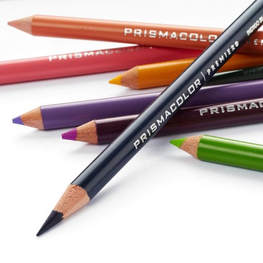
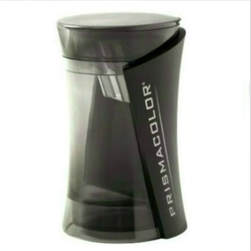
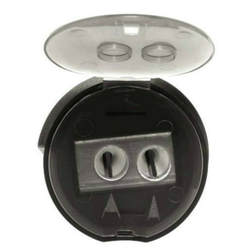
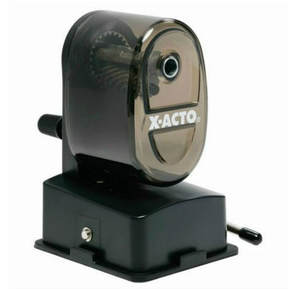


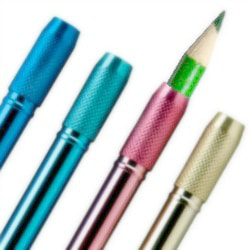


 RSS Feed
RSS Feed